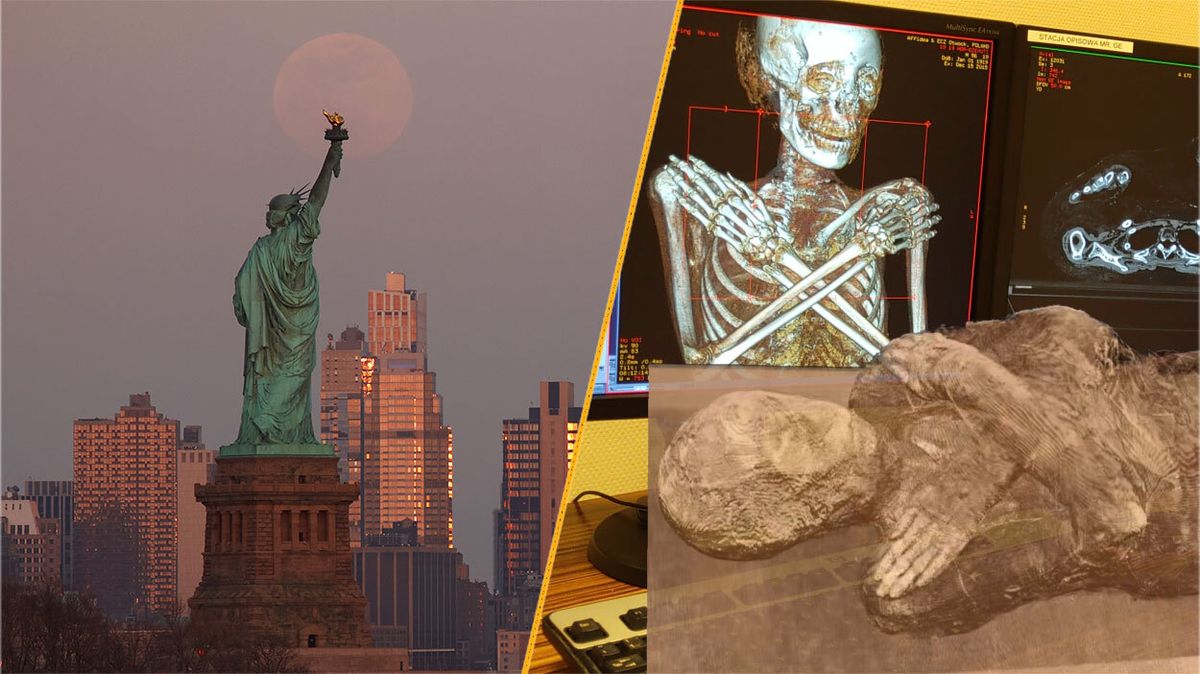Mars Mission Stalled: Why Humanity's Red Planet Dreams Remain Stuck in Neutral
Science
2025-04-14 01:36:49Content

As NASA faces potential budget cuts, the Mars Sample Return mission finds itself under scrutiny. This ambitious project has long wrestled with challenges of cost, complexity, and scheduling. But what if we could reimagine the entire approach to Martian sample collection?
Traditionally, the Mars Sample Return mission has been centered on the complex goal of gathering samples and bringing them back to Earth. However, emerging technologies and innovative thinking are challenging this conventional wisdom. Could there be alternative methods to study Martian samples that don't require the immense logistical and financial burden of physical transportation?
The mission represents a critical intersection of scientific curiosity and technological innovation. While budget constraints threaten its future, the underlying quest to understand Mars remains as compelling as ever. Researchers and space enthusiasts alike are watching closely, wondering how this potential setback might spark even more creative solutions for exploring the Red Planet.
Mars Sample Return: Revolutionizing Interplanetary Exploration Beyond Traditional Boundaries
In the ever-evolving landscape of space exploration, NASA stands at a critical crossroads where technological innovation meets budgetary constraints. The Mars Sample Return mission represents more than just a scientific endeavor; it embodies humanity's relentless pursuit of understanding the mysteries of our neighboring planetary system, challenging conventional approaches to extraterrestrial research.Unlocking Cosmic Secrets: A Groundbreaking Approach to Martian Exploration
The Complexity of Sample Retrieval
Space exploration has always been characterized by immense technological challenges, and the Mars Sample Return mission epitomizes this complexity. Traditional methodologies of planetary sample collection have been fraught with logistical and financial hurdles. Scientists and engineers have long grappled with the intricate process of not just collecting Martian samples, but successfully transporting them back to Earth for comprehensive analysis. The current mission design involves multiple sophisticated spacecraft working in intricate synchronization. Robotic systems must navigate the harsh Martian terrain, collect scientifically significant rock and soil samples, and then execute a precise launch sequence that allows these precious materials to be intercepted and returned to terrestrial laboratories. Each stage represents a monumental engineering challenge that pushes the boundaries of human technological capabilities.Reimagining Sample Collection Strategies
The astronomical costs associated with traditional sample return missions have prompted researchers to explore alternative approaches. What if the fundamental paradigm of physical sample transportation could be fundamentally reimagined? Advanced remote sensing technologies, quantum-level spectroscopic analysis, and sophisticated robotic instrumentation might offer revolutionary alternatives to physical sample return. Cutting-edge technologies like quantum entanglement communication and advanced spectral imaging could potentially provide unprecedented insights into Martian geological compositions without the need for physically transporting materials across millions of miles of interplanetary space. These emerging methodologies could dramatically reduce mission costs while simultaneously expanding our scientific understanding.Economic and Scientific Implications
NASA's budgetary constraints have forced a critical reevaluation of the Mars Sample Return mission. The potential cancellation or significant modification of this project highlights the delicate balance between scientific ambition and fiscal responsibility. Each decision carries profound implications not just for space exploration, but for our broader understanding of planetary science. The economic considerations extend far beyond immediate mission costs. Investments in space exploration have historically yielded remarkable technological innovations that transform multiple industries. Technologies developed for Mars missions have previously revolutionized fields ranging from medical imaging to materials science, creating unexpected economic multiplier effects that justify substantial research investments.Technological Innovation and Future Prospects
The current challenges surrounding the Mars Sample Return mission should not be viewed as obstacles, but as opportunities for radical reimagination. By embracing uncertainty and fostering interdisciplinary collaboration, space agencies can develop more efficient, cost-effective approaches to planetary exploration. Emerging technologies like artificial intelligence, advanced robotics, and quantum sensing are rapidly transforming our capacity to explore and understand extraterrestrial environments. These innovations suggest that future missions might achieve scientific objectives through methods we can barely conceptualize today, potentially rendering traditional sample return methodologies obsolete.Global Collaborative Potential
The Mars Sample Return mission represents more than a singular national effort; it embodies a potential platform for unprecedented international scientific collaboration. By sharing technological resources, financial burdens, and intellectual capabilities, global space agencies could transform this challenging mission into a landmark achievement of human cooperation. International partnerships could not only distribute financial risks but also bring diverse perspectives and technological approaches to solving complex interplanetary exploration challenges. Such collaborative models might ultimately prove more sustainable and innovative than traditional, siloed national space programs.RELATED NEWS
Science

Young Science Innovators Clash: 62 Brilliant Minds Battle at Utica University's Regional Showdown
2025-04-05 22:30:00
Science

Talent Exodus: How America's Brain Drain Is Silently Crippling Innovation
2025-04-16 03:00:05
Science

Unleash Wonder: Inside Greensboro's Science Center Where Family Adventures Come Alive
2025-04-08 16:57:57





